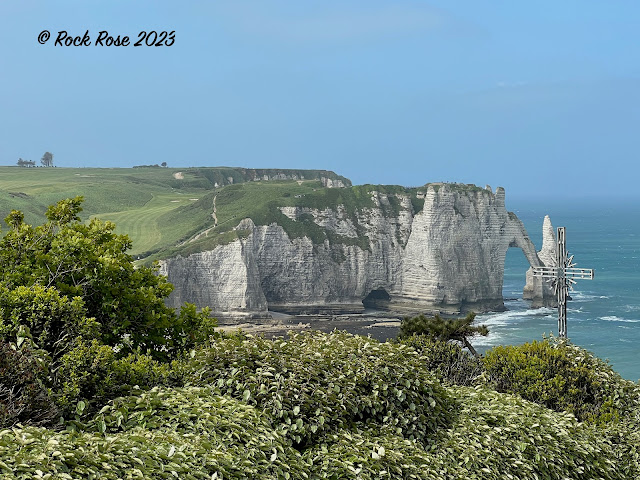I'm about to head into a full out and out war with the javelina. And to say I have few weapons would be an understatement. Javelinas or peccaries as they are sometimes known are not pigs or wild boar although they may have had a common ancestor, but they have common behaviors. They roam the desert fearing only the shotgun. Their only predators are the mountain lion or coyote who would probably only take the young.
They have a gland on their back which produces a foul smelling musk when they are agitated. They have poor eyesight so they usually roam around in a squadron. They can smell garbage a mile away. So much so that we can never leave a garbage can outside at night. They are powerful and can easily knock over the bins as well as take down any poorly constructed fencing. Their numbers are increasing.
The only thing that works is full enclosure and although our back garden is enclosed it is impossible to do anything at the front except an electric fence across the driveway. No one told me about gardening with javelina.
One of the first things we did when we moved in was to arrange to extend the fencing from the front of the house to meet the side fence. It was a pretty expensive project as we had to keep uniformity with the neighborhood fencing. That meant the cutting of steel piping ( the price of which had risen steeply during Covid) and welding into sections which would be cemented in the ground. Also a gate for access. A worthwhile expense.
Prior to this javelina could just wander down the side and into the back garden. It explained what had happened to all the gaura on the original garden plan. Now at least I could begin to plant some more interesting plants.
Meanwhile, I began a complete revamp on the front, removing all the large agave and photinia, leaving only the giant hesperaloe.
Before.
I added rocks, cactus, leucophyllum, whale's tongue agave, lantana, damianita, blackfoot daisies, chocolate flowers and skullcaps. I stood back with a smile on my face. It appears I was lucky with my picks as the only thing the javelina went for was the roots of the hesperaloe-ripping the leaves out of the ground.
After.
 |
I continued down the side garden leading to the front door, removing some bushes, planting bougainvillia, and creating a dry winding creek.
I added more barrel cactus and tucked the five balloon cactus, Parodia magnifica, that had been in a pot in my Texas garden, in the front corner. They had been in the ground for 18 months and nothing had eaten them. They are, after all, spiny. Javelina will browse on bougainvillea leaves and earlier in the week, to do so, they had trodden on one of the balloon cactus.
I was a little annoyed at their clumsiness but worse was to come. On Monday I went outside and discovered the javelina had eaten them all. Not a scrap was left. In fact They had managed to pull them out, eat them and leave me nothing but some dried up roots on the driveway. Every one was gone. But worse than that they had removed the protective wire basket from the Echinocereus mohavensis f. inermis a garden visitor had brought me. It had settled in nicely to its new home.
All that was left was one small piece which I will try to bring back to health. As to the balloon cactus. No more of that. I read somewhere that the javelina has glands in its lips which secrete a substance which deadens their mouths so they can eat spines and prickles.
So what can we do to discourage them. Someone mentioned the usual sprays of garlic and pepper. How about coffee grounds. Coyote urine? Flashing lights? Motion activated water spray. They'd probably like that.
The only thing is to plant plants that they will not eat. Have I just been lucky or will I go out there one morning and discover they have destroyed my front garden? So, more barrel cactus, lantana, rosemary and agave. But not the octopus agave I am growing from bulbils. I have already been told they eat those.
Life is tough enough in the desert but as someone said, " They were here first"









.jpeg)

















.jpeg)
























